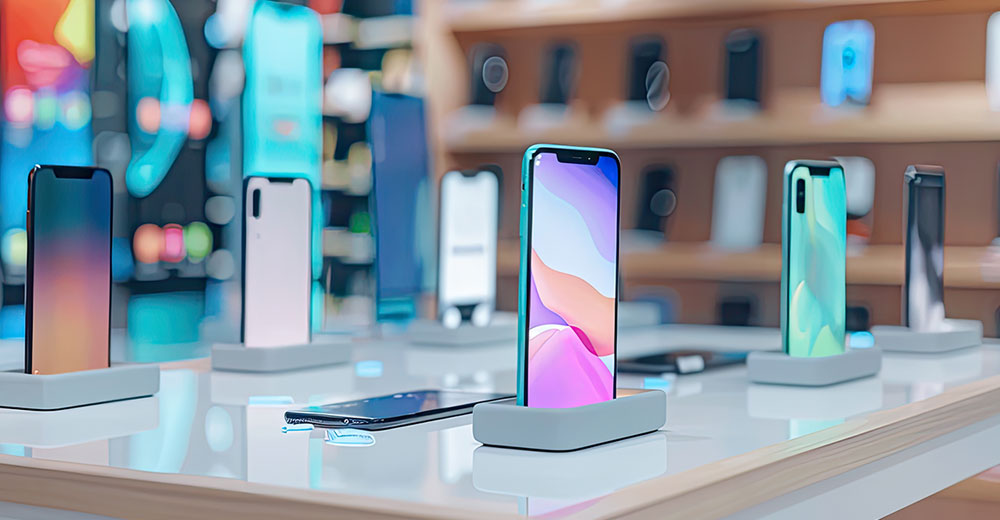Market watchers may not agree on how much smartphone shipments grew in this year’s third calendar quarter, but they do agree on one thing: the market is emerging from its post-pandemic doldrums.
Global market research company Canalys reported Monday that worldwide smartphone shipments grew 5% in Q3 compared to the same period in 2023. The increase marks the fourth consecutive quarter of growth, it noted.
Meanwhile, according to its calculations, IDC pegs the increase for the same period at 4%, marking the fifth straight quarter of growth.
Canalys attributed the growth to demand in emerging economies, alongside the early stages of a replacement cycle in North America, China, and Europe.
IDC noted that the surge in Q3 shipments was led by strong growth from Chinese vendors like Vivo, Oppo, Xiaomi, Lenovo, and Huawei.
Sterling Quarter for Apple
IDC Research Director for Worldwide Client Devices Nabila Popal pointed out that the Chinese phone makers weren’t alone in racking up good growth numbers during the period. “While the growth of the Chinese players in emerging markets has been an ongoing theme this year, Apple also enjoyed a 3.5% YoY growth in shipments this quarter fueled by strong demand from the previous models and the launch of the new iPhone 16 lineup,” she said in a statement.
“In Q3 2024, older iPhone models, specifically the iPhone 15, performed exceptionally well due to the heavy promotions and increased marketing activities around Apple Intelligence,” she noted.
“Despite the staggered rollout of Apple Intelligence in markets outside the U.S., Apple will continue to grow in the upcoming holiday season as it expects many customers to upgrade from the iPhone 13, iPhone 12, and prior models to a new AI-enabled smartphone, future-proofing their purchases for the long term,” Popal predicted.
According to Canalys, Apple’s Q3 growth enabled it to nearly topple Samsung from its leading position in the market.
“Apple achieved its highest third-quarter volume to date and has never been closer to leading the global smartphone market in a Q3 than now,” Canalys Analyst Runar Bjørhovde said in a statement.
“The market’s shift towards premium devices, intersected by an ongoing refresh cycle of devices bought during the pandemic, is benefiting Apple, particularly in its strong-hold regions such as North America and Europe,” he noted.
“Despite a modest initial reception,” he added, “the iPhone 16 is expected to help Apple maintain a strong finish to 2024 and help momentum in H1 2025, particularly as Apple Intelligence expands into new markets and supports additional languages.”
Samsung Retains Catbird Seat
According to IDC, Samsung shipped 57.8 million phones in Q3, giving it an 18.3% market share, compared to 59.5 million units and a 19.6% market share in Q3 2023. Apple, by contrast, shipped 56.0 million units during the period, for a 17.7% share, compared to 54.1 million units and a 17.8% share in Q3 2023.

“Samsung retained its market leadership despite a drop in the total number of units shipped,” IDC Vice President for EMEA Client Devices Francisco Jeronimo said in a statement.
“However,” he continued, “the company continues to grow its share in the premium segment as the average prices increased in the quarter driven by a stronger mix of Galaxy AI-enabled models.”
“The company started rolling out Galaxy AI features to other Samsung models and launched the new Galaxy Z Fold6 and Galaxy Z Flip6 foldables with Galaxy AI, which contributed to a better performance in the premium segment,” he explained.
“I think the improvement in AI capabilities is helping more mainstream smartphones look more attractive, and there’s an appetite for AI everywhere,” Anshel Sag, a senior analyst with Moor Insights & Strategy, a technology analyst and advisory firm based in Austin, Texas, told TechNewsWorld.
Industry in Existential Crisis
Canalys Analyst Le Xuan Chiew noted that the gap between the top five vendors has narrowed, intensifying the competitive landscape.
“Vendors are entering the holiday shopping season with solid momentum and cautious optimism, aiming to attract consumers who have postponed upgrading their devices in anticipation of deals during major events like 11.11 and Black Friday,” he said in a statement.
“However,” he continued, “the importance of effective resource planning cannot be overstated. While market conditions are improving, demand remains fragile as vendors face increasing global challenges in demand generation and regulatory hurdles, such as the EU’s eco-design directive.”
“Effective supply chain management, maintaining healthy inventory levels, and optimizing sales and marketing fund allocation are becoming even more critical for market leadership.”
Bjørhovde told TechNewsWorld that the smartphone industry is in an existential crisis now. “They have to try and find some attraction point that can pull some demand forward,” he said.
“Right now, it’s all about generative AI,” he continued. “A big part of the reason why AI is a big topic is because that’s where a lot of smartphone vendors have their eyes on when it comes to finding new monetization opportunities.”
“But people are not really understanding what a lot of these AI features are,” he maintained. “From an analyst’s side, there are a lot of really interesting developments that will lead to interesting products and solutions in two, three, maybe even four years’ time. For consumers right now, though, an AI feature is just a fancy editing tool. It’s not really something that hugely differentiates what a smartphone can do.”
Continued Growth in 2025 Projected
Bjørhovde explained that the smartphone market has become a tactical game. “It’s trying to attract switchers and finding opportunities for upselling to users in the face of a clear worldwide trend, which is that phones are being used longer,” he said.
“As much as the goal is to drive people to upgrade, the opposite is happening,” he continued. “In the U.S., the carrier discounts or subsidies are not as strong anymore. So, actually finding some add-on features, new revenue streams, new opportunities, leaning in more to B2B in some cases, that’s really where most smartphone vendors are focused.”
He added: “It is an industry that has moved from a concept of revolution into evolution. I think the industry is living with its own curse because from 2007 up to 2015, every release was always hugely exciting. There was always something unexpected. Now it’s not as exciting.”
The urge to upgrade, however, is stronger at the low end of the market, he asserted. “Two or three years ago, if you bought a $150 phone, you’d probably get a 12-megapixel camera and a battery that would last you half a day, maybe a full day. Now, you can almost get 50 megapixels on the camera. You can have two or three days of battery life. So the upgrades happening in the budget segment are really quite dramatic right now.”
Looking forward to 2025, Sag predicted that the market should grow in the low-single-digits, which is normal for a mature market.
Bjørhovde also sees continued market growth. “I think we’re looking at a year and a half probably. And if Apple Intelligence starts to pick up some new features and become really interesting in a year’s time, that could be a driver to get more people to decide to upgrade at that point.”













